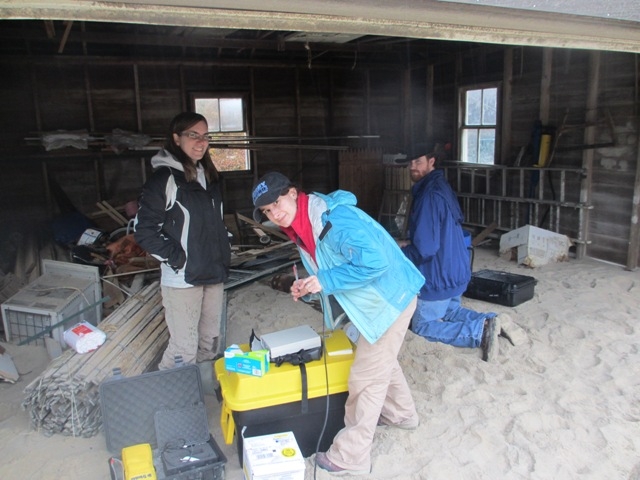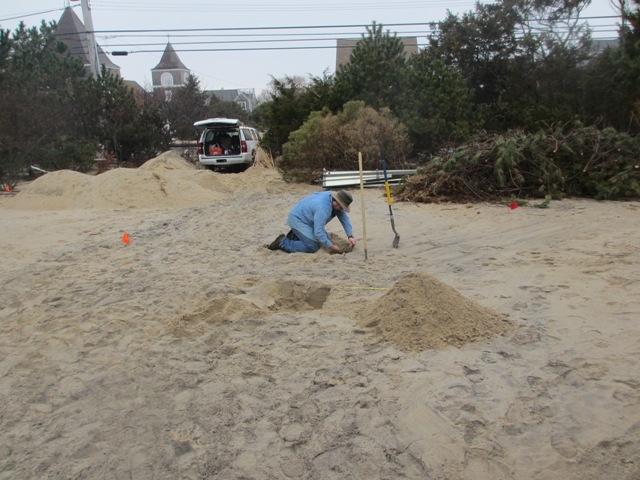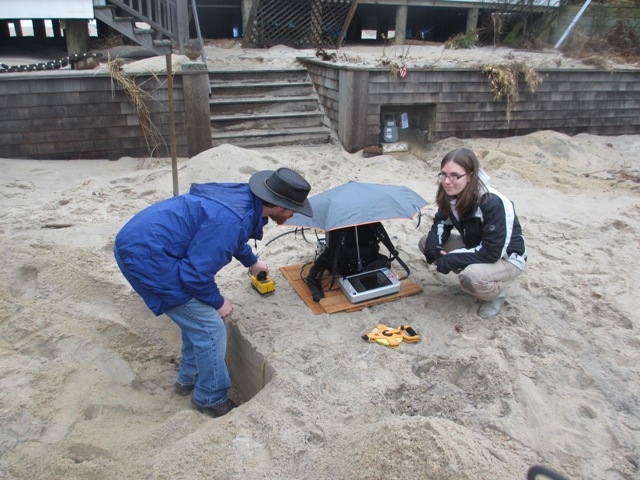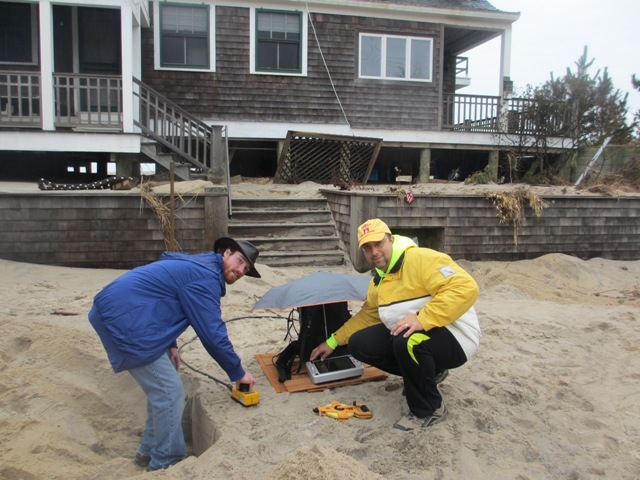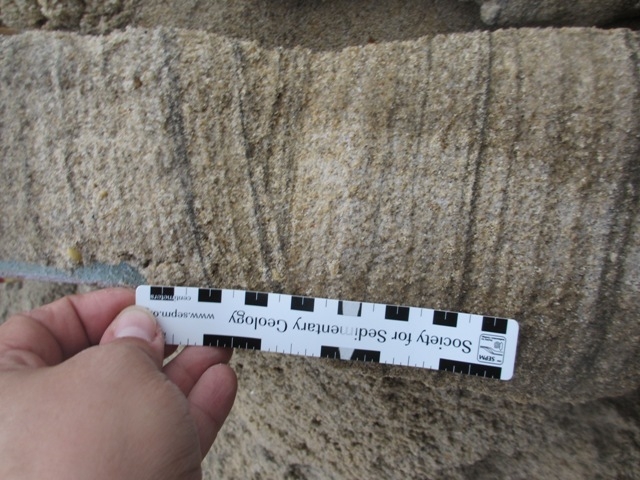Researchers dig into Hurricane Sandy’s geological legacy
Temple earth and environmental science faculty and graduate students explored areas along a New Jersey beachfront on Dec. 7, looking for the geological signature of Superstorm Sandy recorded in the layers of sand.
“We know quite a bit about Sandy from the meteorological data,” said assistant professor Ilya Buynevich, who led the research field trip to Mantoloking in Ocean County, NJ. “But with the geological data we gather, we can link the properties of sand to the forces of storm surge.”
The researchers examined washovers and other geological features for deposits of light and heavy minerals in the sand as evidence of the wave surges that caused so much destruction. The surges leave alternating layers of dense and light minerals, much like a layer cake, during each individual wave surge. The proportion of pebbles and dense “heavy” mineral left in the sand can indicate a wave surge’s strength, including its velocity and duration.
“It’s like Mother Nature has given us a geological recorder,” said Buynevich, a coastal geologist. “We can then use Sandy’s geological signature to compare it with other washovers along the coast, geological data from recent storms such as Hurricane Irene, as well as storms that occurred hundreds and even thousands of years ago when there was no documentary or instrumental data.”
The researchers dug trenches behind the eroded beach, and x-rayed the washovers with georadar and measured the magnetic properties of the sediments, as well as collected samples to determine the size and shape of individual grains of sand.
Temple graduate student Irina Beal will be using this information as the basis for her master’s thesis and will present the results at a special session dedicated to the superstorm at a regional Geological Society of America conference. The team will visit other areas along the New Jersey coast to collect additional data next summer.
